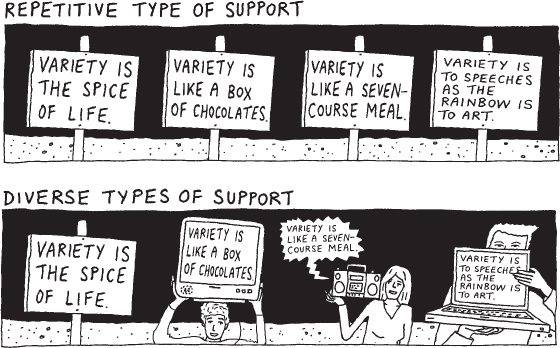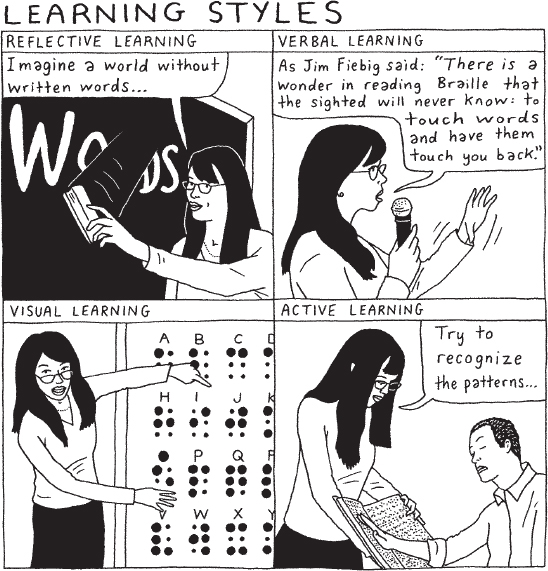Appeal to Different Learning Styles
Printed Page 245
Select supporting materials that appeal to different audience members’ learning styles. Active learners learn best by “doing something active” with the material being presented, while reflective learners “prefer to think about it.”22 Visual learners, by contrast, tend to “remember best what they see,” while verbal learners tend to “get more out of words—written and spoken explanations.”23


To appeal to this range of learning styles, use a combination of supporting materials throughout your speech. For instance, to clarify a point for verbal learners, you could use a spoken definition along with a vivid analogy; to appeal to visual learners, you could also incorporate visual aids (see chapter 14). One landmark study found that students retained 26 percent of what they heard and 30 percent of what they saw, but those totals increased to 50 percent for information they heard and saw.24 And asking thought-provoking questions or providing opportunities for audience members to think about a concept can help reflective learners.
To appeal to diverse learning styles in a speech on abstract art, for example, you might begin by defining abstract art and comparing it to other related art forms, such as nineteenth-century African masks and traditional Japanese prints. You might then present a few pictures of abstract art pieces (perhaps alongside some nonabstract pieces) and then ask the question, “Which pieces are examples of abstract art?” (See chapter 10 for a discussion of rhetorical questions.)
To appeal to active learners, you can give audience members a chance to do something with your supporting materials. For instance, after using a narrative to help her listeners understand how bees fly, one student invited audience members to manipulate their arms to simulate the motion of bees’ wings.